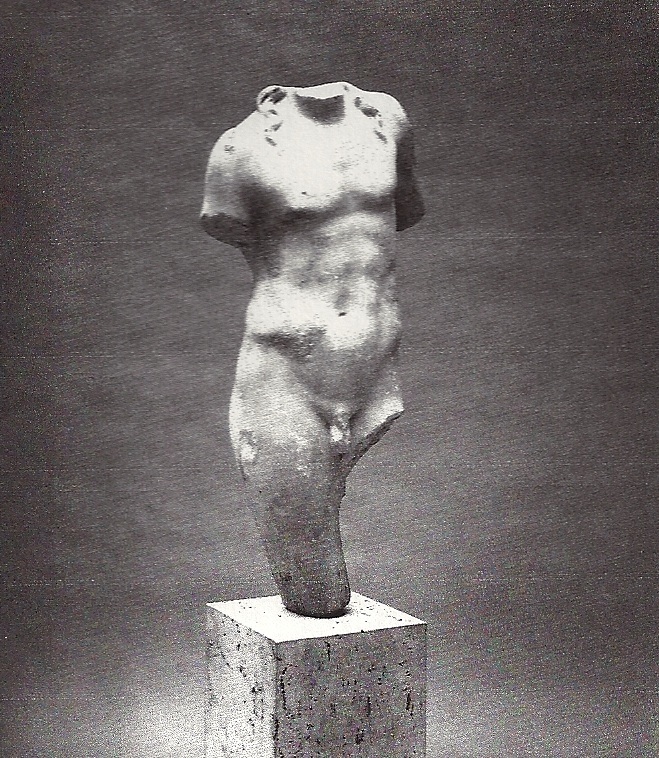
Unknown
Roman
Apollo or Dionysos, 1st c. CE or 2nd c. CE
marble
33 in.
SBMA, Museum purchase with funds provided by the Dan Murphy Foundation Memory of Russell McKinnon, Count Daniel Donahue and Countess Bernadine Murphy Donahue
1971.69
COMMENTS
This almost three-quarter life-size statue of a youthful figure in a standing position with the weight supported on the right leg is carved of white, fine-grained marble. Although both arms are missing from the biceps, the position of the arms could certainly suggest that the Santa Barbara Torso of a Youth [as it was called at the time of acquisition] depicted Apollo Kitharista--that is, the god Apollo holding in his left arm a kithara (a heavy, lyre-like instrument), indicative of his association with Muses, and a plectrum or pick in his right hand. The character of the body, the pose, and the modeling recall a mid-fifth-century bronze Apollo Kitharista from Pompeii now in Naples. But there are other possible interpretations of the downward arm position. The Santa Barbara youth may have been carrying drapery of some sort on his left forearm, as do several statues of a similar type. Or he may simply have been standing in a graceful but not especially significant pose; for this type, too, there are parallels. It may even be possible that this figure with his long, wavy tress of hair falling on each side and over his shoulder was a Dionysos or Bacchus. Some gods that were first depicted as virile gradual took on increasingly effeminate character in the Hellenistic period--Dionysos in particular.
The elegant body with graceful S-curve and sensitive treatment of the anatomy has an undeniably Praxitelean flavor, showing the fourth-century mastery of the integration of muscle and flesh. Whatever the exact pose of the Santa Barbara youth may have been, the figure certainly seems to represent the strong tradition of Praxiteles responsible for so many statues produced throughout Roman times.
A hole, apparently modern, as been drilled at the back between the shoulder blades, presumably to secure the statue to a wall. There is considerable abrading and pitting. The statue has been partially cleaned of the hard encrustation that still appears along the right side of the torso at the ribs and hip and across to the right side of the abdomen; also on the left side of the torso and what remains of the left leg; it is especially heavy on the left shoulder and preserved upper left arm, and the back.
Maria A. Del Chiaro, Classical Art Sculpture, Santa Barbara Museum of Art, 1984, pp. 7-8
Prepared for the website by Vikki Duncan, January 2013
